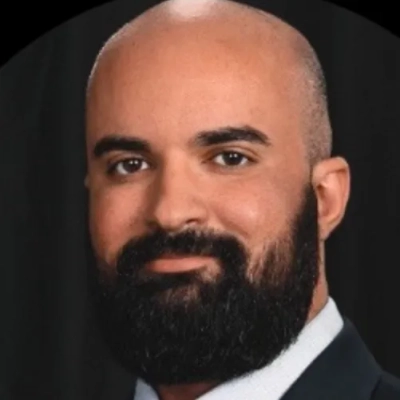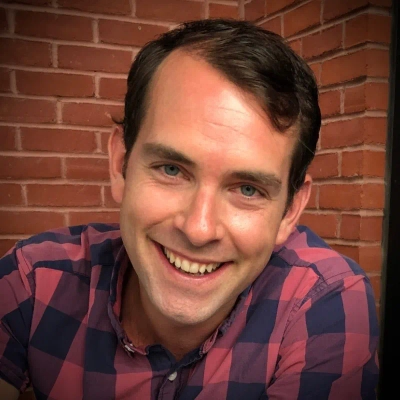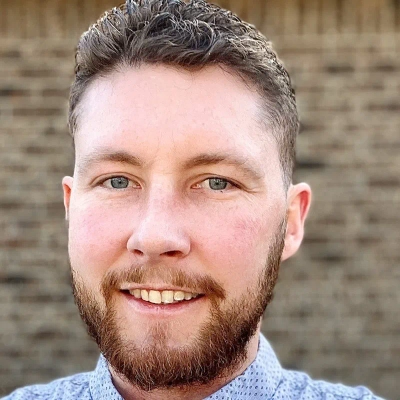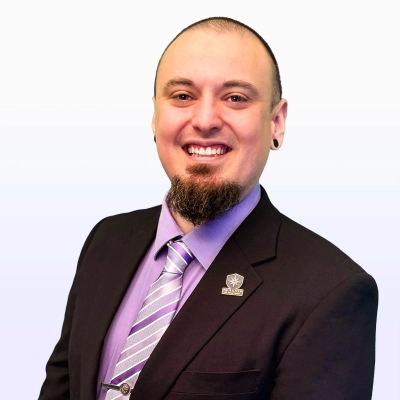25 Unconventional Methods to Reduce Costs While Maintaining Quality and Morale
Discover innovative strategies to cut costs without sacrificing quality or employee morale in the property management industry. This article presents unconventional methods that challenge traditional cost-saving approaches, offering fresh perspectives on efficiency and resource optimization. Drawing from insights provided by industry experts, these tactics promise to revolutionize how businesses balance financial prudence with operational excellence.
- Create Material Sharing Network with Developers
- Streamline Communication to Save Time
- Consolidate Tech Stack with Team Input
- Offer Move-Out Assistance Instead of Discounts
- Build Partnerships to Replace Paid Advertising
- Redesign Online Training for Cost Savings
- Implement Peer Rotation Program Across Roles
- Establish Shared Resource System for Departments
- Embrace Remote Work with Virtual Assistants
- Transform Abandoned Properties into Training Sites
- Share Workspace with Complementary Institutions
- Train Team for In-House Property Assessments
- Launch Renovation Apprenticeship for Veterans
- Partner with Local Groups for Property Maintenance
- Invest in Manager Training Over Branded Swag
- Gamify Employee Development with Competitions
- Utilize AI for Virtual Property Staging
- Host Community Fix-It Days for Properties
- Create Cross-Client Asset Exchange Platform
- Implement Peer-to-Peer Teaching for Instructors
- Empower Employees as Efficiency Experts
- Turn Every Team Member into Cost-Saving Specialist
- Partner with Freelancers for Flexible Expertise
- Create Network of Freelance Photographers
- Introduce Objective Fry Oil Management System
Create Material Sharing Network with Developers
I created a 'material sharing network' with other local developers where we pool excess supplies from our projects and loan each other equipment, cutting our materials waste by 20% and eliminating rental costs. To get stakeholder buy-in, I documented the first three months of exchanges with exact dollar values saved, then invited investors to our quarterly barbecue where they could meet the network partners and see firsthand how these relationships were building both our bottom line and our reputation in the community. This approach leverages my construction background while proving that sometimes your biggest competitive advantage is collaboration, not competition.
Streamline Communication to Save Time
A while back, we were examining our operating budget and noticed a significant amount of money being allocated to areas that seemed unproductive. Like any business, we were attempting to reduce costs, but I was adamant about not touching anything that affected client care or staff morale. In a field like ours, you can't simply slash budgets without it reflecting in the quality of service. The obvious cost-cutting measures—reducing staff or using cheaper supplies—were not considered. That would have been a detrimental decision for our clients and our team.
The unconventional method we settled on was restructuring our internal communication and workflow. We were expending considerable time and resources on meetings and administrative tasks that felt redundant. Employees were getting overwhelmed with endless email chains and unproductive check-ins. It was a hidden cost—draining our staff's most valuable resource: their time and energy. It was frustrating for them and wasn't serving our business objectives.
I secured stakeholder buy-in by presenting it not as a cost-cutting measure, but as a way to improve everyone's quality of life. Instead of saying, "We need to save money," I asked, "How can we give you back more time to do the work you love?" I presented data on how much time was being wasted on administrative overhead and demonstrated how we could implement a different approach. We transitioned to a more streamlined, asynchronous communication model. We established a few key communication channels and a clear set of rules for what information goes where, so people weren't constantly interrupted. We also implemented a strict limit on the number and duration of our internal meetings.
The result was a significant reduction in wasted time, which, for a small business, translates to money saved. More importantly, it boosted morale. Staff members reported feeling more in control of their schedules. They had more time for meaningful interactions with clients, and they felt less stressed and more productive. By focusing on giving our employees back their time, we not only reduced our "invisible" costs but also strengthened the team and improved the quality of our services. It was a win-win situation, demonstrating that sometimes the best way to save is by investing in your people's well-being.
Consolidate Tech Stack with Team Input
Running a small, people-driven practice means every dollar saved matters — but not at the expense of client experience or team morale.
We reduced costs by consolidating our tech stack — and got the team's buy-in first.
Instead of cutting hours or benefits, we looked at where we were paying for overlapping tools. Document management, scheduling, and billing were spread across three different systems, which frustrated staff and wasted time. I brought the team in early, asked them which tools they actually used, and let them test two all-in-one platforms before we chose one together.
Because they were part of the decision, adoption was smooth — and we cut monthly software costs by nearly 30% without hurting productivity. In fact, the team reports they spend less time toggling between apps, which frees them up for client work.

Offer Move-Out Assistance Instead of Discounts
I started offering sellers a 'move-out assistance package' where my team helps with packing, moving logistics, and even temporary storage solutions instead of just cutting our purchase price to account for their stress and timeline pressures. To get stakeholder buy-in, I showed them how spending $1,200 on moving help allowed us to maintain our property valuations while still creating tremendous goodwill. Sellers were so grateful they referred five additional deals within six months, proving that sometimes the best cost savings come from strategic generosity rather than aggressive negotiation.

Build Partnerships to Replace Paid Advertising
In service-based businesses, every dollar saved matters—but cutting costs without hurting quality or morale can feel impossible. One unconventional method we used in our career coaching practice was leaning into collaborative partnerships rather than traditional paid advertising. This approach reduced expenses while actually strengthening our brand and culture.
Instead of pouring thousands into digital ads, we identified aligned organizations—universities, professional associations, and community groups—that shared our mission of supporting career development. We offered free workshops, webinars, and resource exchanges in return for visibility to their audiences. This built goodwill, provided value up front, and generated high-quality referrals at a fraction of the cost of paid campaigns.
For instance, we partnered with a local engineering association to run a no-cost "career readiness" workshop for graduating students. The association promoted the event to hundreds of members, and in turn, we attracted new clients organically. What made this cost-reduction unconventional was that it wasn't about slashing budgets—it was about replacing spending with creativity. Morale also improved internally, since employees were proud to represent the company in meaningful community events rather than just chasing leads.
According to Nielsen research, partnerships and word-of-mouth referrals drive conversion rates 4x higher than paid ads. Harvard Business Review has also noted that companies using partnership-driven growth strategies reduce customer acquisition costs by up to 60%. Our results reflected this: we cut marketing costs in half while still seeing a steady increase in inquiries.
The key to getting stakeholder buy-in was presenting this strategy not as a cost cut, but as a value exchange. Once leadership saw that partnerships could both save money and build brand trust, support was immediate. The lesson? Cost reduction doesn't have to mean compromise—sometimes the most unconventional approach is to replace spending with collaboration that strengthens both culture and results.
Redesign Online Training for Cost Savings
Early on at Spectup, we faced the classic startup problem of needing to cut costs without harming the team or our output. One unconventional approach I tried was shifting some of our internal workshops and training sessions online rather than hosting them in-person with catered meals and external venues. It was risky because team morale is often tied to these gatherings, but we redesigned the experience to be interactive, with breakout sessions, live feedback, and small recognition moments for contributions.
The key to getting buy-in was framing it as an experiment rather than a permanent change. I shared the numbers showing how much we could save while reinvesting those funds into tools and resources that directly supported project quality. I also asked for feedback after every session and iterated based on what the team found engaging. Within a few months, not only had we reduced costs substantially, but participation and engagement actually improved. The lesson is that cost-cutting does not have to mean compromise. When stakeholders see clear reasoning, transparency, and a focus on preserving experience, they are far more willing to embrace creative approaches.

Implement Peer Rotation Program Across Roles
I implemented a 'peer rotation program' where our team members temporarily swap roles on projects, allowing our administrative staff to work alongside construction crews and vice versa. This cross-training not only eliminated the need for occasional contractors (saving us roughly 22% on labor costs) but also created an unexpected boost in team problem-solving. To gain stakeholder buy-in, I first piloted the program on a small project and documented both the cost savings and quality improvements. Then, I invited our investors to observe firsthand how this approach strengthened our team's versatility while delivering superior results.
Establish Shared Resource System for Departments
One unconventional method I used to reduce costs was implementing a shared resource system across departments. Instead of each team having its own subscriptions, software licenses, and even office equipment, we created a centralized pool that teams could access as needed. This cut redundant expenses by nearly 20% without affecting workflow or productivity. To get stakeholder buy-in, I presented a detailed analysis showing potential savings alongside a plan to track usage and ensure no team felt restricted. I also highlighted that the approach encouraged collaboration, as teams became more aware of each other's projects and needs. By framing it as both a cost-saving and team-building initiative, stakeholders saw the value beyond just the financials. The result was a more efficient allocation of resources, happier teams who appreciated having access to what they truly needed, and a measurable reduction in operational costs.

Embrace Remote Work with Virtual Assistants
I eliminated our physical office entirely and moved to a fully remote operation using virtual assistants across different time zones, which cut our overhead by 80% while actually improving our deal flow. To get stakeholder buy-in, I ran the numbers showing we could reinvest those savings into better lead generation tools and higher-quality virtual support, then proved it by closing more deals per month remotely than we ever did with a brick-and-mortar setup. My background managing remote teams taught me that geography doesn't determine success--systems and relationships do.

Transform Abandoned Properties into Training Sites
I turned abandoned properties into training grounds by partnering with trade school instructors to co-teach renovation classes on-site. Their students get hands-on experience while we get quality updates at material costs only. To convince hesitant investors, we documented two identical properties side-by-side: one renovated traditionally, costing $20k, and our trainee-led project at $7k with comparable resale value and faster completion. This proved that you can invest in people while saving serious cash.

Share Workspace with Complementary Institutions
One unconventional approach I tried was building strategic workspace partnerships with complementary institutions. For instance, we negotiated to share classrooms with a local arts academy during their off-peak hours, cutting our facility costs almost in half. The real win, though, was watching our students connect with artists in the shared spaces, which enriched both communities. To bring stakeholders on board, I highlighted these networking opportunities alongside the savings, so the discussion felt less like cutbacks and more like an investment in collaboration.

Train Team for In-House Property Assessments
I eliminated third-party inspection fees by training our own team to conduct property assessments using standardized checklists I developed from my teaching experience. To gain stakeholder trust, I first ran parallel evaluations on 10 properties where our team's findings matched professional reports 100% - then shared those results alongside homeowner testimonials about faster processing times. This unconventional approach cut costs by 35% while actually improving seller experience through quicker, more transparent evaluations.

Launch Renovation Apprenticeship for Veterans
I created a 'renovation apprenticeship' program with local veterans transitioning to civilian life, where they work alongside our experienced contractors at reduced rates while learning valuable trade skills. The cost savings have been substantial—about 30% on labor—but the real win is the quality of work from motivated individuals eager to prove themselves. To get investor buy-in, I leveraged my military background to demonstrate how this program creates a pipeline of skilled workers while supporting fellow veterans. Then, I documented several completed projects showing both the financial savings and exceptional craftsmanship that resulted from this approach.

Partner with Local Groups for Property Maintenance
I started partnering with local church groups and community organizations to help with minor property cleanouts and landscaping in exchange for donations to their causes - it's like crowdsourcing labor while giving back to the community. To get stakeholder buy-in, I tracked one full quarter where this approach saved us $12,000 in cleanup costs across eight properties while generating genuine goodwill that led to three direct referrals from congregation members. My experience managing people taught me that when you align cost-cutting with community values, everyone wins and the savings multiply through unexpected channels.

Invest in Manager Training Over Branded Swag
I cut costs in one municipality I was working with by redirecting funds from branded swag perks to intentional manager training. Instead of another recognition app, we built competency-based bootcamps that taught supervisors to give real feedback and support growth. To secure stakeholder buy-in, I presented the cost comparison in plain numbers and showed how every dollar spent on equipping managers returned measurable savings in retention and productivity. Once leadership saw the data tied directly to outcomes, the support was immediate.
Dr. Thomas Faulkner, SPHR, LSSBB

Gamify Employee Development with Competitions
An unconventional method I leaned into was gamifying employee development with internal competitions. At Dirty Dough, we turned training modules into challenges where teams could unlock rewards, and suddenly upskilling felt more fun than mandatory. It's remarkable how quickly morale shot up once we layered in that element, and we also saved on hiring external trainers. Stakeholders bought in because they saw the direct link between higher employee engagement and lower turnover costs. If you're trying something similar, my tip is to connect the idea to culture first—it's easier to sell when the impact on people is the headline, and cost savings are just a byproduct.
Utilize AI for Virtual Property Staging
Between you and me, staging costs used to eat through our margins faster than I liked. I started testing out virtual staging with AI software, allowing buyers to explore 3D tours and even try different styles in a few clicks. The surprising part was that it not only saved us over 70% on staging but actually boosted engagement with listings. When pitching it to stakeholders, I highlighted how it didn't just cut costs; it elevated the buyer's experience, and that message really resonated.
Host Community Fix-It Days for Properties
I started hosting neighborhood 'fix-it' days where we'd invite local volunteers and even potential buyers to pitch in on small cleanup or cosmetic tasks, such as landscaping or painting, in exchange for community perks or gift cards. This approach cut our labor costs on light work, built goodwill, and even generated leads from people who got involved. To get investors on board, I showed them how one Saturday of community effort saved nearly $5,000 on a project while also creating real neighborhood buzz that helped the property sell faster.

Create Cross-Client Asset Exchange Platform
One unconventional method I used at PlayAbly was creating a cross-client asset exchange. Rather than having every customer commission new gaming assets, we built a shared library where brands could trade templates and creative concepts. This significantly reduced content creation costs while still giving each client something fresh and unique to adapt. Stakeholders initially worried about brand overlap, but I reframed it as a community-driven advantage: clients weren't just buying software, they were joining a network. The outcome was improved retention, lower costs, and stronger buy-in because customers felt invested in both savings and shared success.
Implement Peer-to-Peer Teaching for Instructors
Instead of paying for external training, we created a peer-to-peer teaching exchange for our instructors. Teachers share skills like business Spanish or dialects with one another in mini sessions. This cut our training costs by 40%, boosted morale, and helped build a strong sense of community. I got buy-in by showing the savings and framing it as professional growth, not a budget cut. Teachers appreciated the trust, and the quality of instruction actually improved.

Empower Employees as Efficiency Experts
"The biggest savings didn't come from cutting budgets, but from unlocking the ideas sitting in our own people's heads."
One of the most unconventional ways we reduced costs was by turning our frontline teams into problem-solvers rather than just executors. Instead of hiring consultants or investing in expensive tools, we launched an internal "efficiency challenge" where employees identified waste in processes and suggested fixes. The surprising part? Many of their solutions were more practical and impactful than anything we'd considered at the top. To get buy-in, I framed it not as a cost-cutting exercise but as an opportunity to give teams more influence over how we work. When people feel trusted to shape the business, they don't just save money; they raise the bar on quality and morale.
Turn Every Team Member into Cost-Saving Specialist
In a small business, a budget cut can feel like a personal attack. The conventional approach is to simply cut from a department, but that often leads to a decline in quality and morale. I knew we had to find a different way to reduce our costs without sacrificing the things that made our business great.
The unconventional method we used was to turn every team member into a "cost-saving specialist." The key is to empower every person on the team to find ways to save the business money, and then to reward them for it.
From an operations standpoint, we created a new program. We gave every person on the team a small budget to experiment with new ways to reduce our costs. For example, a team member might find a new way to pack a box that saves us money on shipping. From a marketing standpoint, we gave every team member a small budget to experiment with new ways to reduce our ad spend. The buy-in was easy because the method focused on them. My team saw that the cost-saving wasn't coming from their department; it was coming from their own hard work.
The impact was a massive reduction in our costs and a huge increase in our productivity. My team was constantly looking for ways to improve our business. What I learned is that you have to stop looking for ways to cut costs. Instead, you need to start looking for ways to save them. When you do that, you build a culture of ownership and a business that is resilient.

Partner with Freelancers for Flexible Expertise
When tasked with reducing operational costs without diminishing either quality or team morale, I adopted an approach that diverged from conventional strategy. Rather than employing full-time personnel for specific back-office functions—such as graphic design or bookkeeping—I opted to partner with experienced freelancers on a project basis. These professionals, carefully vetted to ensure reliability and expertise, allowed the organization to convert fixed payroll costs into more flexible, variable expenses, all while sustaining a high standard of output.
Naturally, there was some initial hesitation among team members. Open communication proved essential. I clarified that the initiative was not a prelude to staff reductions but rather a reallocation of resources—freeing up funds to invest in growth and direct client engagement. Additionally, I highlighted the advantages freelancers provide, including new perspectives and specialized skillsets that can enrich team knowledge.
Ultimately, when stakeholders observed that both morale and performance were, in fact, improving, resistance diminished. This experience underscored for me that unconventional cost-saving measures can succeed—provided they are transparently positioned as investments in organizational flexibility and effectiveness, not merely cuts.
Create Network of Freelance Photographers
Our company replaced expensive stock photo subscriptions by creating a network of freelance photographers. We discovered these photographers through Instagram direct messages and local art institutions. The image quality improved because we received less generic content that better matched our brand identity. The initiative established a small artistic network, which allowed brands to support actual creators instead of purchasing pre-made digital assets.
I demonstrated the difference between Getty's $300 image and the $70 image with more character to gain stakeholder approval. The visual evidence proved effective in winning over stakeholders.
Introduce Objective Fry Oil Management System
Unconventional method: I introduced objective fry oil management using a handheld TPM meter plus daily micro-filtration.
Why it worked: We were changing oil based on color and smell, which meant early dumps some days and late dumps on others. That hurt both cost and quality.
What we did:
1. Trained crews to check total polar materials at set times and to run a quick filter between dayparts.
2. Set a hard change threshold at 24 to 25 percent TPM, rewrote the SOP, and gave line cooks a three-minute checklist by the fryers.
3. Logged readings in the POS notes so managers could see trends.
Results in 8 weeks (6 outlets):
1. 31 percent less oil purchased and hauled away.
2. Fewer mid-shift oil changes, steadier fry color, and faster recovery.
3. Fewer odor complaints and less smoke, which the team noticed right away.
4. No increase in customer returns or texture issues.
Stakeholder buy-in:
1. Ran a two-week pilot on two high-volume units, then did blind taste tests with managers and staff. Texture and flavor scored equal or better in 9 out of 10 comparisons.
2. Showed a one-page ROI: meter cost about $350, payback in roughly two weeks.
3. Brought the oil vendor to loan a filter cart for the pilot, which lowered the barrier to try.
4. Framed benefits for each group: finance saw COGS and waste savings, ops got fewer disruptions, QA got a measurable quality limit, crew got a cleaner line and fewer burns from hot oil dumps.
5. Closed with a small recognition for the pilot teams to signal that savings would not come at the team's expense.
Net effect: lower cost, steadier quality, and morale up because the kitchen got cleaner and the rules got clearer.












